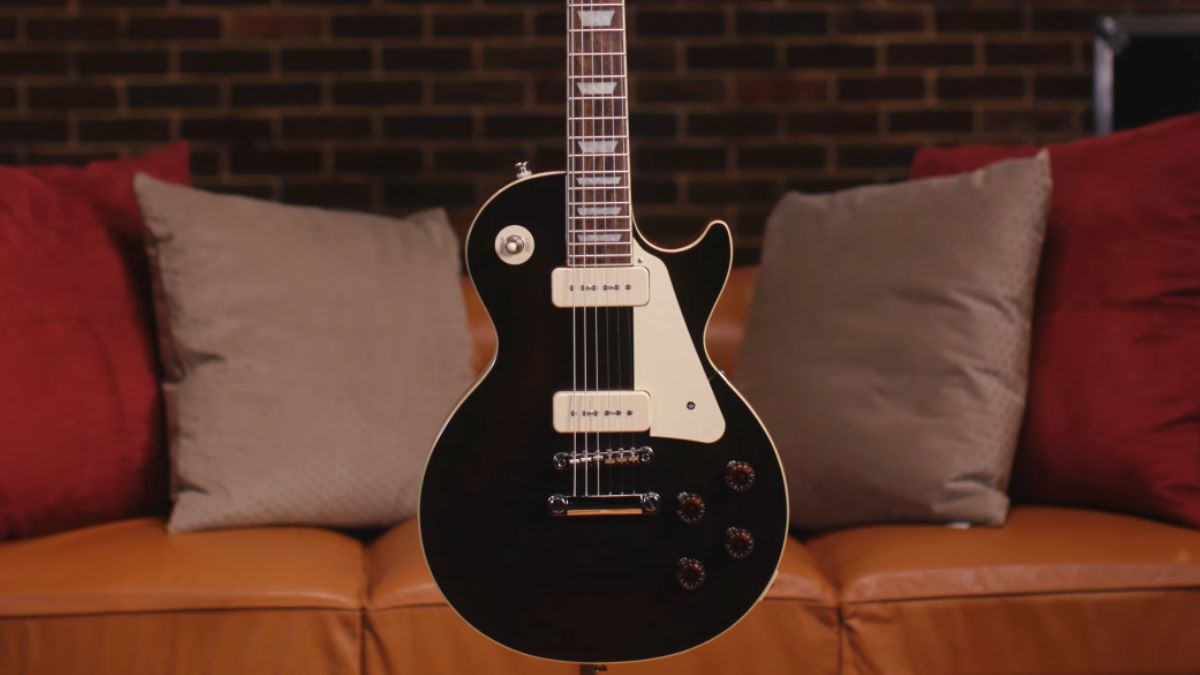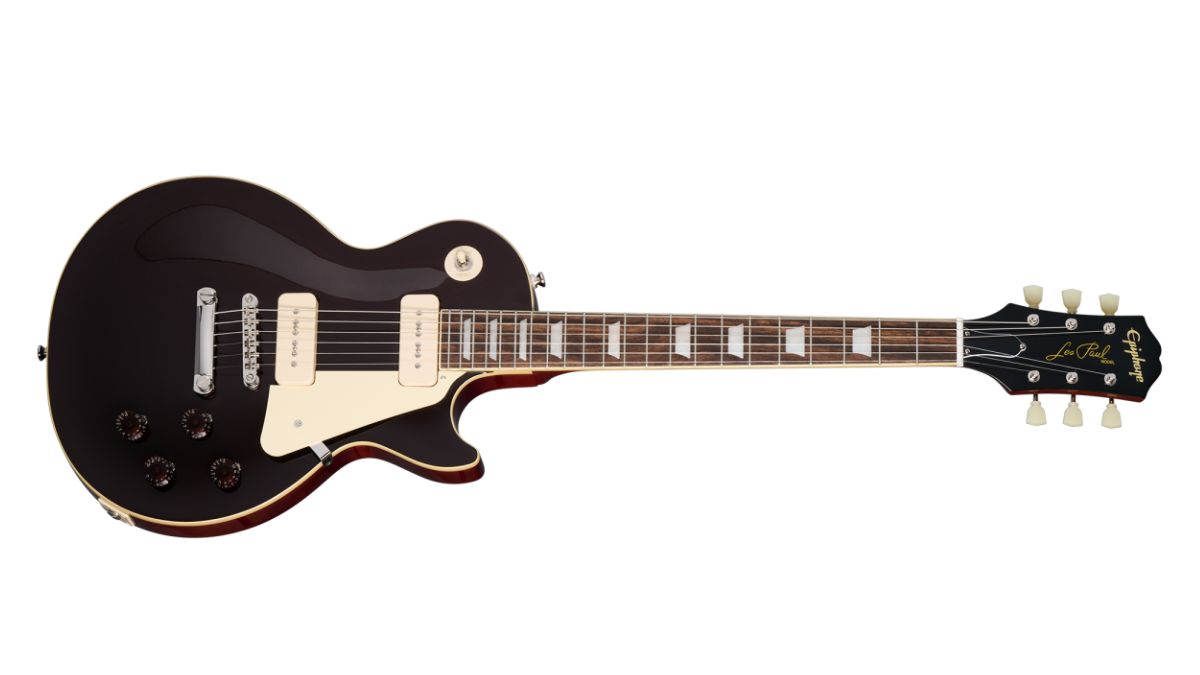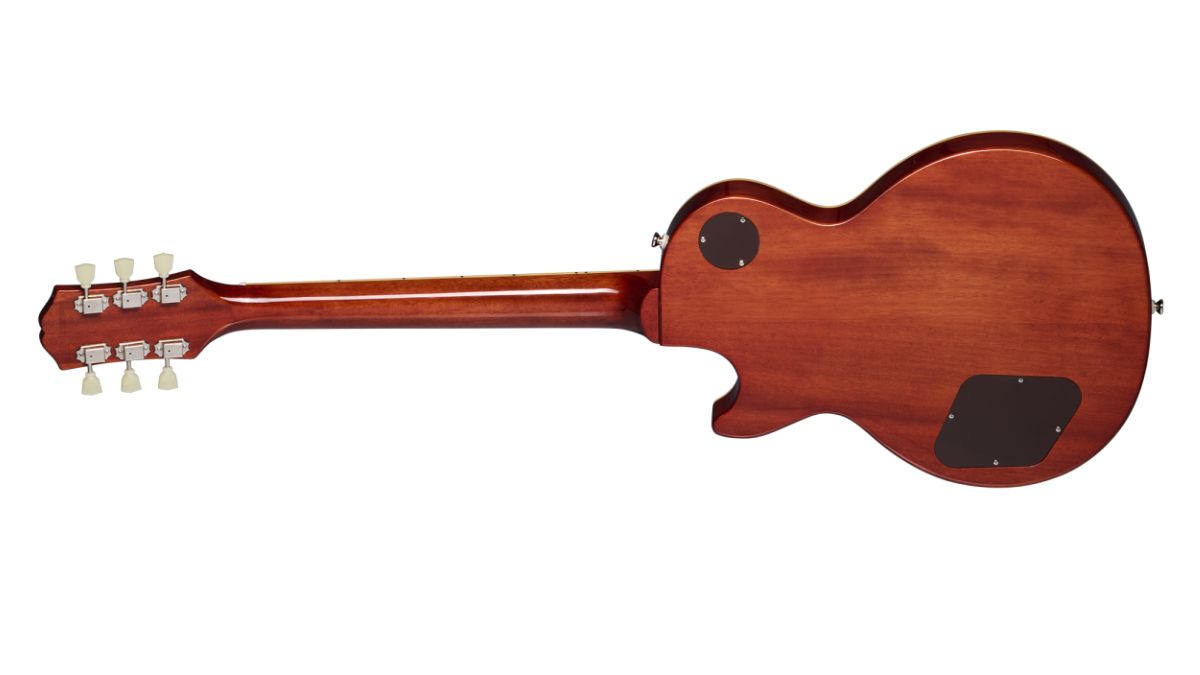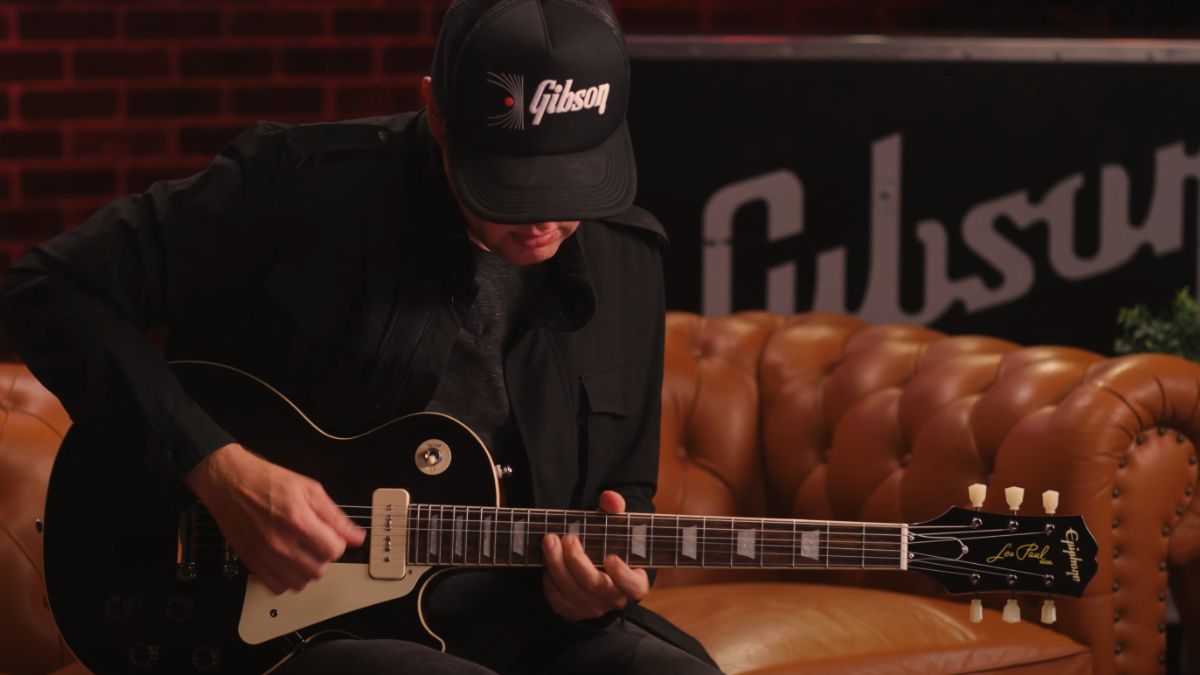Joe Bonamassa's new signature Epiphone Les Paul has a finish you've never seen before. It has a pair of unlikely pickups too
"These are ready to rock, and you can rule the world with 'em!" Bonamassa says of his new budget-priced Les Pauls

Joe Bonamassa has put his name on his 12th guitar collaboration with Epiphone: the 1955 Les Paul Standard, a guitar inspired by both vintage and contemporary blues rock greats. The model is part of the guitarist's Artist Series, a partnership between Bonamassa and Epiphone that typically produces a new guitar each year.
This time, however, Bonamassa has thrown a couple of left curves into the mix.
Notably, the 1955 Les Paul Standard is the first guitar in the series to feature P90 pickups. It follows in the wake of a 1962 ES-335 reissue based on one of the guitarist's most cherished six-strings, and a 1963 SG Custom designed for those priced out of buying a vintage Gibson
Those previous creations have featured humbuckers — the SG Custom even had three. But Bonamassa says he was intrigued to pursue a P90 model and points to players like Leslie West, Blackberry Smoke's Charlie Starr and Jared James Nichols as examples of guitarists who have had success with the pickup.
“I'm known as a humbucking player, but I own a lot of P90 Les Pauls and they clean up really well, ” he says. “Most people who are real dyed-in-the-wool Gibson people will say behind closed doors that their favorite pickup is a P90. They're cleaner. There's a sparkle on top that a humbucking pickup doesn't get.”
In addition, the Epiphone 1955 Les Paul Standard features Gibson's rare Copper Iridescent finish — which makes sense when you learn that the guitar is modeled on two 1955 Copper Iridescent Les Pauls that Bonamassa owns (he notes in the video below that a third example was recently discovered).
Although the colorway is little known today, Gibson introduced it in 1955 and offered it as a standard finish option for some time. The color, which changes from brown to copper, depending on the light, is one of Bonamassa's favorites. He even has a ‘72 Les Paul in the same finish — evidence that it was no flash-in-the-pan trend. He laments “that there's just not many” examples and praises Epiphone for its work “tracking down the original paint color” for the new model.
All the latest guitar news, interviews, lessons, reviews, deals and more, direct to your inbox!
In addition, the 1955 Les Paul Standard comes with the usual Epiphone Les Paul trimmings and a few choice amendments, including a mahogany body topped with bound maple, and a bound laurel fretboard with 22 medium jumbo frets and pearloid trapezoid inlays. Interestingly, the guitar features a ‘59-inspired rounded C-profile mahogany neck joined to the body with a long tenon neck joint.
As for those pickups, they're a pair of Epiphone P90 Pro Soapbars and are paired with Copper Iridescent speed knobs. Hardware includes Epiphone Deluxe tuners, a LockTone Tune-o-matic bridge and stopbar, and a '59 Les Paul no-bevel pickguard to match the soapbar pickups.


Bonamassa says he's “happy we’ve done a P90 guitar, because it was long overdue.” The guitar's price point — $849, including hardshell case — also fits with his desire to create an affordable instrument. “I wanted to go back to making guitars that were under $900 with a case," he says. "These are ready to rock, you can rule the world with 'em.”
Head to Epiphone to learn more.

A freelance writer with a penchant for music that gets weird, Phil is a regular contributor to Prog, Guitar World, and Total Guitar magazines and is especially keen on shining a light on unknown artists. Outside of the journalism realm, you can find him writing angular riffs in progressive metal band, Prognosis, in which he slings an 8-string Strandberg Boden Original, churning that low string through a variety of tunings. He's also a published author and is currently penning his debut novel which chucks fantasy, mythology and humanity into a great big melting pot.


